From horseless carriages to self-driving transports, the past century-and-change has seen cars in every imaginable size, shape and form. But during that time there have been only a few vehicles that have transcended automotive history and entered into cultural history, making them iconic cars.
Status is by and large subjective, but there’s no arguing that these automobiles are as recognizable – both by name and design – and influential as any other four-wheelers that have crossed our paths.
Ford Model T
It’s impossible to formulate a list of the most iconic cars in history without starting off with the Model T. Henry Ford’s creation went beyond transforming the nascent automotive industry: It also had an indelible effect on American society.
First sold in 1908, the Model T was not the first automobile available for purchase in the U.S. It was, however, the first that most people could afford to buy. By revolutionizing mass production through assembly line manufacturing, which substantially lowered the cost to make the car, Ford was able to sell the Model T starting at $260, roughly $8,000 today. By the 1920s, more than half of the world’s registered automobiles were Fords. Closer to home, mass ownership of the vehicle helped connect rural Americans to the rest of the country and eventually led to the introduction of the numbered highway system.
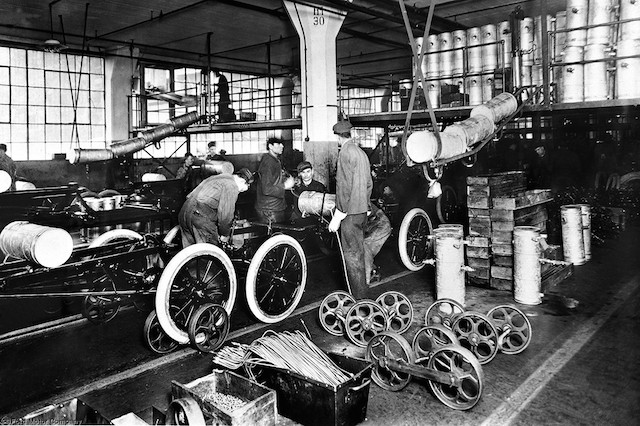
The Model T was more than just the first mass-produced car. It was also revolutionary as an automobile in and of itself. It was the first to have a steering wheel on the left side (previous models had it in the center) and to offer a windshield. That’s not all. According to the Ford Motor Company, “The vehicle was also the first to have its engine block and the crankcase cast as a single unit, the first to have a removable cylinder head for easy access, and the first to make such extensive use of the lightweight but strong alloy known as vanadium steel.”
One characteristic the Model T is often thought to have lacked is color. It’s commonly believed that the vehicle was only offered in black. However, this was only true from 1914-1925. Before and after that time, it was available in several different colors including blue, red, grey, and green.
Ford last made the Model T available in 1927, replacing it the following year with the Model A. All told, more than 15 million Model T’s were sold.

Ford F-Series
If you stick to the roads of the Northeast you may be surprised to learn that the Ford F-Series is the best-selling vehicle in the country – and has been for decades. The truck is the most popular car in a majority of states, including nearly every one in the South and Midwest.
A few years after Ford debuted the Model T, customers began asking for a vehicle capable of hauling heavier loads to help them with work and deliveries. The company responded with 1917’s Model TT, which had the Model T’s cab and engine but a heavier-duty frame.
Following decades of commercial use, the first consumer F-Series debuted in 1948. “After the war, a lot of rural Americans moved to urban and suburban centers looking for work, and many took their Ford pickups with them,” said Ford historian Bob Kreipke. “Ford saw this as an opportunity, and began work on the next generation of trucks for 1948, what came to be known as F-Series Bonus Built trucks.”
Over the decades, the truck merged its utilitarian nature with improved aesthetics and creature comforts like two-tone paint, automatic transmissions, armrests, sun visors and improved heater and radio. It soon became a vehicle that fit in just as well on the farm as it did on Main Street. Today’s F-Series trucks are nearly as luxurious as any luxury car – but far more popular.
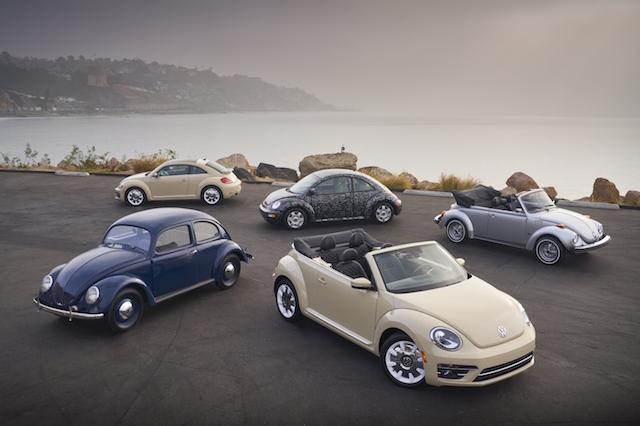
Volkswagen Beetle
There is not a more recognizable car in automotive history than the Volkswagen Beetle. Behind that famous bulbous shape is a fascinating story filled with twists and turns. Ironically, although it rose in prominence in the U.S. during the flower power days of the 1960s and ’70s, the car was first commissioned by Germany in the lead-up to World War II. The vehicle was meant to provide German citizens with transportation much like the Model T did in America, but as the war ramped up, production was put on hold.
The first Beetle exported to the U.S. arrived in 1950 and by 1968 America had become Volkswagen’s largest foreign market, accounting for 40 percent of the company’s produced cars. The Beetle’s unique shape – designed by Porsche founder Ferdinand Porsche – and bright colors attracted Americans looking to bask in the post-war glow. It remained popular when drivers began buying smaller, more compact vehicles and got a cultural boost when the car was featured prominently in Disney’s “The Love Bug.” In 1972, the Beetle passed the Model T as the bestselling car of all time.
In the 1990s, Volkswagen unveiled a sleeker, modernized version of the Beetle. This model was sold for the next 20 years until the marquee ceased production of the Beetle in 2019.
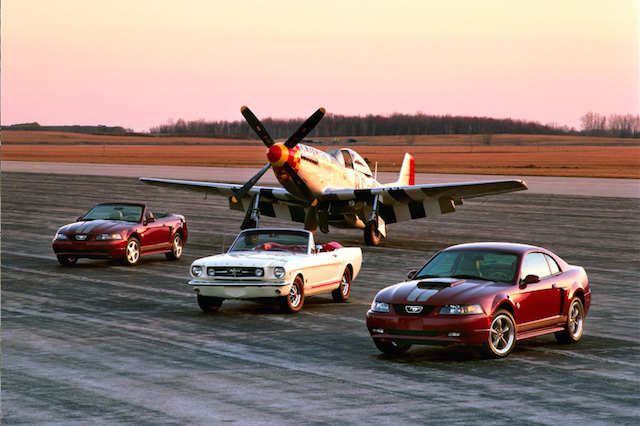
Ford Mustang
The mid-20th century was an exciting time for automobile enthusiasts. It was during this period when the idea that cars could be more than just a mode of transport – namely, they could be stylish – took hold.
Ford Motor Company took that concept to a new level when it unveiled the Mustang at the 1964 World’s Fair. The vehicle’s debut was featured on the covers of Newsweek and Time magazines. The publicity worked. With its long hood and short rear deck, the world’s first pony car had a look unlike any other, and consumers lined up. In its first year, the Mustang sold 400,000 units; in the first three years, 1.7 million. This made the Mustang Ford’s most successful vehicle since the Model A.
In case it needed more of the limelight, a green 1968 Mustang 390 GT was famously featured in the movie “Bullitt,” starring Steve McQueen. This helped launch the coupe from popular car to cultural icon.
Today, the Mustang remains as popular as ever. It has been the world’s best-selling sports car each of the past seven years.

Toyota Corolla
The Toyota Corolla is so ubiquitous on American roadways that it’s seen more as an everyday vehicle rather than an iconic car. But it’s precisely that popularity that makes the Corolla one of the most iconic cars in history.
At the time the Corolla was first produced in 1966, car ownership in Japan was still something the general public aspired to. Toyota allowed them to reach that goal by creating a car designed as not just a utilitarian form of transportation, but something owners could be proud of, while still being affordable.
“The market has demanded attractive vehicles – vehicles that don’t seem inferior when compared to others and even appear somewhat luxurious” said former Corolla development leader Tatsuo Hasegawa. As such, the car was given great attention to detail and came equipped with new technology and innovative features only seen in higher-end vehicles. These included a revolutionary engine, floor-mounted gear lever, separate bucket-type front seats, armrests, as well as a center console box, radio and heater.
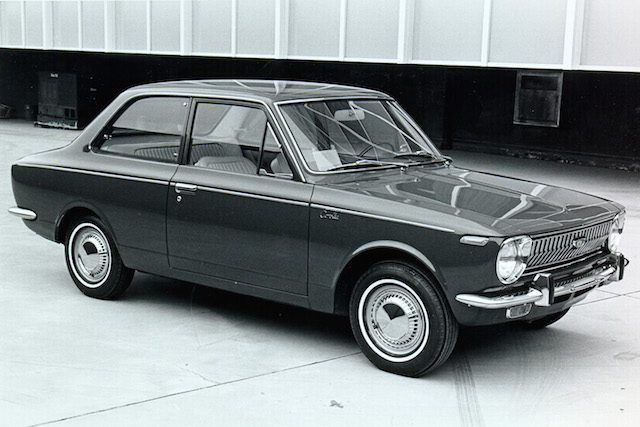
The Corolla also holds an important place in American automotive history. The car was first introduced stateside in 1968 and became the first Japanese automobile to have a major footprint in the United States. Today, America imports more cars from Japan than nearly any other country, roughly $30 billion worth.
As you can observe on your daily commute, the Corolla is still around and still very popular. Through half a century and 12 model generations it has become known as the epitome of automotive efficiency and reliability. That has translated to sales of more than 50 million, making the Toyota Corolla the best-selling car of all time.
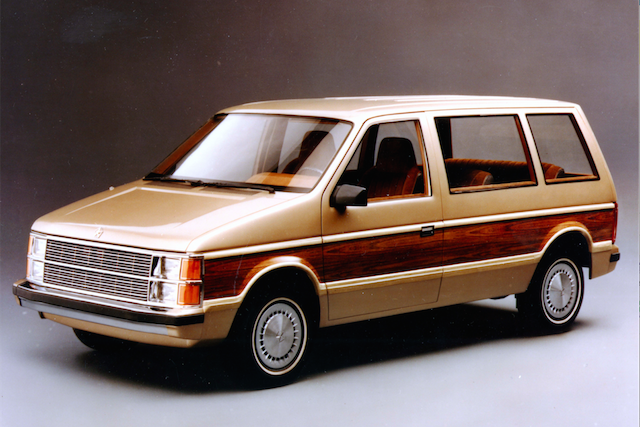
Chrysler Minivans
The minivan may not be the sexiest automobile in history, but when they were unleashed onto the public, these family mobiles were downright revolutionary. A van that could drive and handle like a consumer car was an idea that had never been broached.
In the mid-1970s, Ford Motor Company president Lee Iacocca felt the brand needed a family van model. A team of engineers developed a prototype, which Iacocca kept hidden out of fear that the project would get killed off my his boss, Henry Ford II.
A few years later, Iacocca left Ford to join rival Chrysler and was allowed to take his minivan idea with him. By 1983, the idea had finally come to fruition and the van was ready. Sold under two monikers, the Plymouth Voyager and Dodge Caravan, the vans were an immediate hit with consumers, selling 290,000 units in the first year. People loved the extra cabin room, sliding door, and car-like maneuverability. It was particularly popular with suburban families who could drive their kids around in one vehicle and still be able to fit that vehicle in their home garage. In no time at all, Chrysler had created a new segment in the auto market and other manufacturers followed suit, creating their own van models.
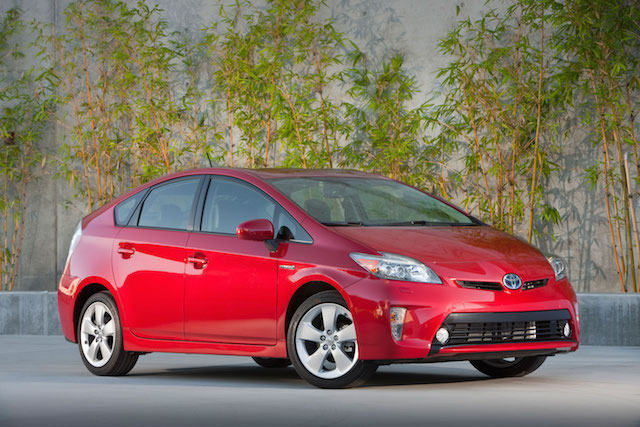
Toyota Prius
Electric vehicles are the wave of the future and it may not be long before they’re the only cars on the road. It may be difficult to imagine a time without clean-energy cars, but it wasn’t all that long ago – and it was the Prius at the helm of ushering in the automotive trend.
In the 1990s, Toyota set its sights on developing cars with better fuel efficiency. The result was 1997’s Prius, which first reached the U.S. in 2000. The car’s hybrid power system utilized regenerative braking that converts energy into electricity. Interestingly, the futuristic first-generation model was not a hit. Toyota’s designers went to work and came up with a completely redesigned Prius in 2003. The car got boasted an Environmental Protection Agency-estimated rating of 46 combined mpg.
The Prius exceeded expectations by selling hundreds of thousands of units internationally and quickly became one of the most talked about cars on the market. As time went on and climate change became more of a concern, the vehicle grew in popularity to the point where there was a waiting list just to buy one.
Now up to an estimated 58/53 mpg, the Prius remains one of the bestselling hybrids. Toyota has since introduced a plug-in hybrid model capable of 133 mpg equivalent.

Tesla Sedans
While Prius created the electric vehicle market, Tesla has taken it by storm. It started in the early aughts when a team of engineers formed Tesla, Inc. and set out to produce an electric vehicle that could not only meet the performance and capabilities of gas-powered cars, but surpass them, all while producing zero emissions.
Their first attempt was the Roadster sports car, which in many ways was an incredible success. It achieved 245 miles on a single charge, an unheard of range for EVs at the time, accelerated from 0 to 60 miles per hour in less than four seconds and reached a top speed of 125 mph. But with a price tag north of $100,000, the Roadster was prohibitive to most customers.
The team went back to the drawing board and in 2012 unveiled the Model S, which immediately raised the EV bar. According to Tesla, the sedan boasted “the longest range of any electric vehicle, over-the-air software updates that make it better over time, and a record 0-60 mph acceleration time of 2.28 seconds.” Just three years after its release, the Model S was already the top-selling battery electric vehicle.
The only thing that threw the car from its throne was Tesla’s release of its Model 3. In 2018, its debut year, the smaller, less-expensive sedan moved 140,000 units – and the pace hasn’t slowed. Although it’s been around for less time than most of its competitors, the Model 3 has quickly outpaced the market and is currently the best-selling battery electric vehicle of all time with more than 1 million cars sold.
Tesla also produces two crossover models, the X and Y, but it’s the company’s sedans that remain most popular and iconic.
Have you driven any of these cars? How was the experience?
What other cars deserve a spot on this list? Let us know in the comments below!
104 Thoughts on “The Most Iconic Cars in History”
Leave A Comment
Comments are subject to moderation and may or may not be published at the editor’s discretion. Only comments that are relevant to the article and add value to the Your AAA community will be considered. Comments may be edited for clarity and length.



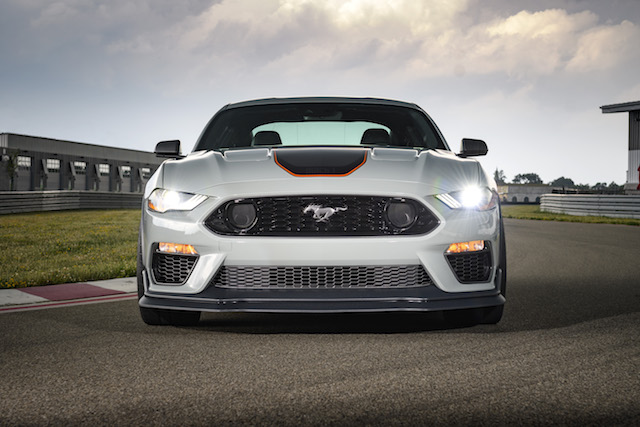
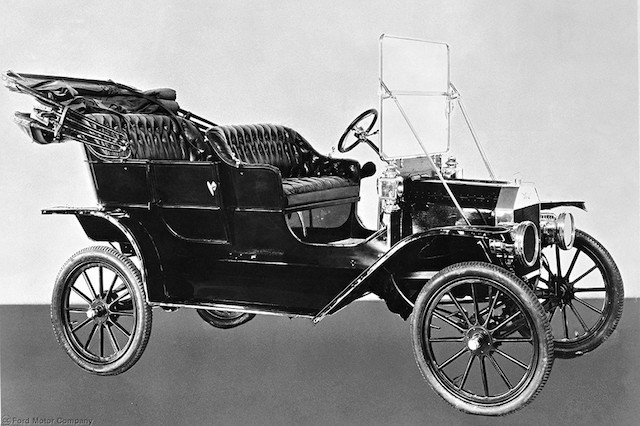

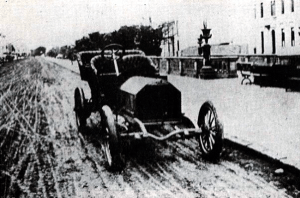









Don’t blame people for loving sports cars, but some are quite narrow minded. A little Ford heavy, but Chrysler got the last laugh on minivans. I want to talk “revolutionary”. I still have my ’87 Caravan(got it early ’90s). I hate fashion; couple times had guys in suv’s try to shame me, just laugh at their ignorance. Middle seat(2) & rear seat(3)(can also be moved to middle) are self-contained incl. seat belts, easily removable & leave an open, completely flat floor. No lip @ bottom of sliding door opening, as a plumber, I can slide an 80gal. wtr. htr. in box, in the side door & close it ! FAAAR more UTILITY than a “sport utility v.” & FAAAR more sporty, also. (maybe not to look at, but to drive, ABSOLUTELY). Once had the thrill of driving, by myself(so I didn’t have to worry about scaring THE HELL out of anyone), narrow, humpy, winding roads from NH to Wayne, Maine. Very little other traffic, THANK GOD, I often needed a lot more than my ½ of the road. I pushed it as hard as I could, went as fast as I could on those country roads, up shifting and down shifting the manual frequently for miles(hate automatics). I could not believe how it handled; like a sports car. Front WD, the cross member & drive train sit very low up front. These INCREDIBLE vehicles are extremely well designed & well built. The auto REVOLUTION of 1984. THANK YOU LEE IACOCCA !
Inconceivable (yeah, I know about “You keep using that word. I do not think it means what you think it means.”) that nothing in the Jeep line is not mentioned in this article. It is one of the most iconic American vehicles ever.
Oh hell, editing error. Meant to say that “nothing in the Jeep line is mentioned in this article.” Somehow got an extraneous “not” in there.
The Honda CRV should be considered iconic due to its durability, size, and convenience. It may not be the first SUV, but it has continually been one of the best in sales.
I have a 66 Corvette convertible, It will blow away that Mustang. Put a cover over them and the corvette stands out, Beautiful lines.
The most iconic US vehicle is the Chevy Corvette “Stingray”. First fiberglass sports car with racing lines. Internationally, the Jaguar E-Type (XK-E) and the MG TD were iconic world class vehicles….
Mustang is NOT a “sportscar”. Look up the definition: TWO seater. BTW, the best selling sportscar is the Miata MX-5. As others have said, how about the ’57 Chevy BelAir, the Smoky and the Bandit TransAm, the Chevy Corvette , and the ’59 Caddy with the humongous tail fins??? Other than that, I like your piece!
How about the Porsche 911
The Continental Mark II was manufactured in 1956 and 1957. It was the most elegant car of the decade. It was owned and driven by celebrities and world leaders. About 3,200 cars were manufactured.
Civic with a laptop deserves a spot there💀
The Jaguar XKE roadster has to be on the list of iconic cars. (I’ve had mine for 56 years.)
How about the ‘32 Ford Duece Coupe Hot Rod???
They usually chopped and channeled these for the ultimate effect! It was truly Classic….
The Prius iconic? Does iconic now mean annoying, stupid, and ugly?
Where’s the love for the Volvo 240 series?
From the 140 through the 940 series,solid swedish engineering and durability
What about the truly iconic ’56 Chevy?????
These guys have no idea what an iconic car is… Corvette, ya think, DMC Delorean, Camaro, Ferrari 250 GTO, Pontiac GTO, Ford Thunderbird, Shelby Cobra… the list goes on and on. F150 ?
YES to all those wonderful iconic cars!
The DE LOREAN DMC 12 is probably the most iconic car the world has ever seen. Famous? You bet! It’s NUTS not to list it here! And they have a Prius here? My De Lorean has a brand new stage 2 engine with ported and polished heads, road and track cams, twin headers and dual catalytic converters, with a lot more horsepower than stock, idles rough like a funny car etc. It is every bit as exotic as you would expect with a chassis by Lotus. It was designed to resist corrosion and thus reward the customer. And not listing the Corvette is a nuts too. I drove my car into NYC once past NBC studios and TV cameras poked out a Limo’s windows following me about town. I’m no movie star! Hows that for Iconic?! This list is a new car add if you ask me.
There’s 2 big problems with this list. What the author or reader thinks the definition of iconic means. Also, in this subject 10 is just not enough. It is easy for me to agree with the choices, but there a many more just as good or maybe better.
Really the Beetle? How many air cooled rear end cars are on your block? I’d say try a Hemi Dodge Charger Luke.
Really the Beetle? How many air cooled rear engine cars are on your block? Maybe try a Hemi Dodge Charger Luke.
Was this a Ford commercial
so, ford model t, ford f series, ford mustang, hmmm do you see a pattern.
no corvette? shame on you, imports? iconic? i think not.